8,687 views
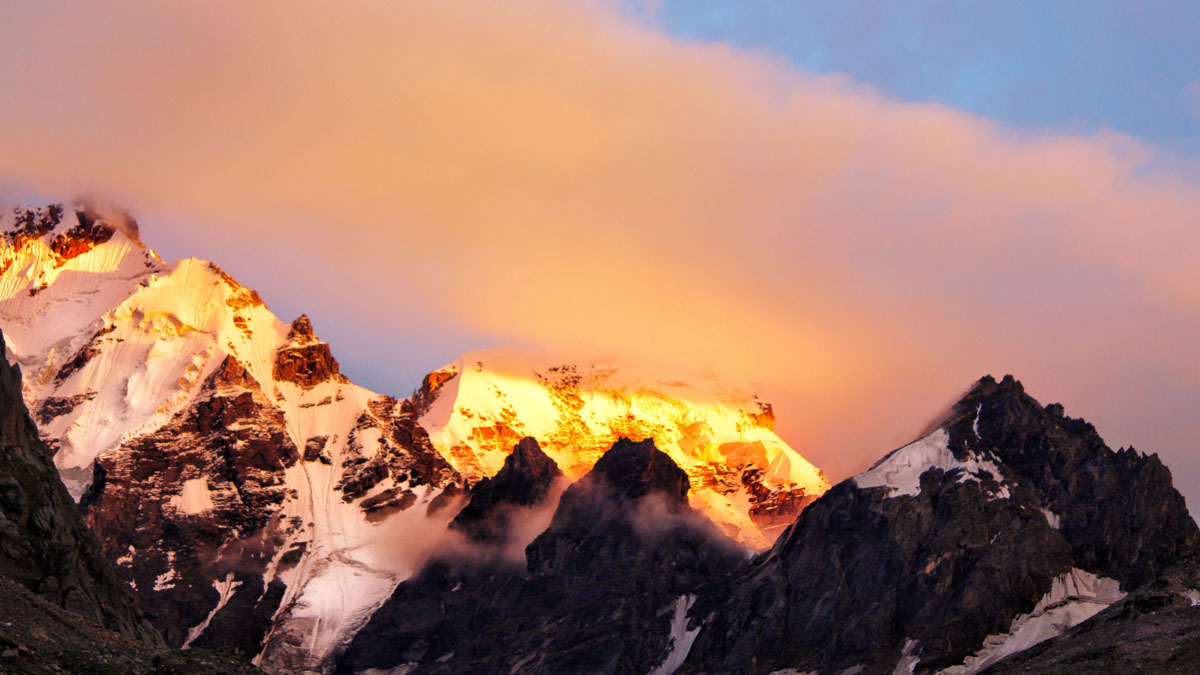
Incredible Hampta Pass Crossover Trek
By Dipak Desai
Last Updated: 19 Jan 2023
“In all things of nature, there is something marvelous”. This quote by Aristotle cannot be more apt when one goes on a trek. Being an avid nature lover, I started trekking 15 years ago in an attempt to experience mother nature to its fullest. This hobby led me to become a part of the Youth Hostel Association of India, which was also the beginning of some of the most memorable experiences I have had.
Among my favorites of course, is the Hampta Pass trek, a small corridor between Lahaul's Chandra Valley and the Kullu valley of Himachal Pradesh, India. It is fondly known as the "State of all seasons". From the lush green valley of Kullumanali to the desert valley of Lahaul, this 8-day trip will leave you in complete awe of the beauty of the Himalayas.
Historical and cultural significance of Hampta Pass
In addition to being a beautiful trekking destination, Hampta Pass also has an interesting cultural and historical background. Once, it was a part of the ancient trade route linking the Kullu Valley with Lahaul and Spiti Valleys. Traders used the pass to transport wool, silk, spices, and tea. Hampta Pass is surrounded by indigenous communities, including Kullu and Lahauli. For generations, these communities have cultivated their cultural heritage in harmony with the environment.
Hampta Pass trek offers an opportunity to experience the region's cultural and historical importance, as well as its stunning natural beauty. The trek provided me with a chance to observe the local culture and connect with the region's rich heritage.
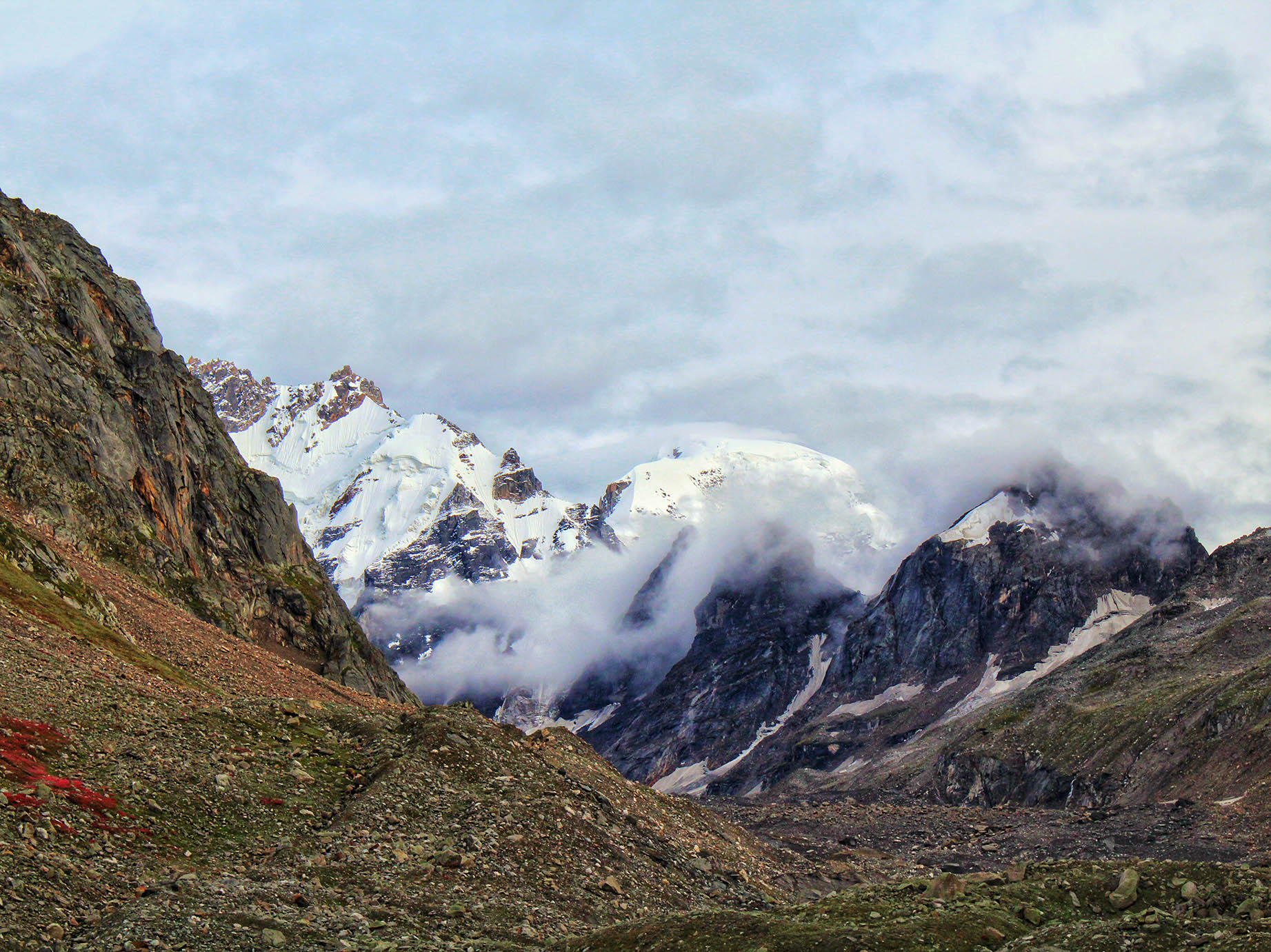
On a clear day, Hampta Pass offers a breathtaking view
Why did I choose to trek Hampta Pass?
I chose to trek Hampta Pass due to its stunning natural beauty and challenging terrain. I had heard that the trek offers a perfect combination of lush green valleys, snow-capped mountains, and scenic landscapes. Furthermore, I was intrigued by the region's cultural and historical significance.
An avid trekker, I was seeking a new challenge. Hampta Pass, with its rugged terrain and high altitude, seemed like the perfect place to push my limits and test my endurance. I wasn't disappointed. The trek was challenging, but it was also incredibly rewarding, and I felt accomplished when I reached the summit. The experience was life-changing for me, as it allowed me to connect with nature and challenge my mental and physical abilities.
Preparing for Hampta Pass Trek
First things first, let me give you the logistic info. You can choose from a number of Hampta Pass trek packages. There are several options for choosing the itinerary for Hampta Pass trek, depending on your level of interest. I did this trek in August, which according to me is the best time to visit Hampta Pass. I was traveling from Rajkot, Gujarat so my journey involved a flight to Delhi and then a 15-hour overnight bus ride to reach Manali.
Wondering how to reach Hampta Pass from Manali?
There are several options to reach Hampta Pass base camp from Manali and one of them is by car. The distance between Manali and Hampta Pass base camp is mere 15 km. Prini is the base camp where trekkers have to assemble. Once I reached here, I met my trekking group which consisted of 40 trekkers. Of note is that these groups usually consist of 40-45 trekkers per batch. Summers being peak season, treks are organized across a 20-day window. During this time, there is one group at each campsite everyday. Pack smartly and travel light to maximize your experience. Ensure your fitness level is good and most importantly, carry your medications, if any. In preparation for the Hampta Pass trek, I would advise that you anticipate the difficulties and challenges that you may encounter.
With that out of the way, let me get onto the exciting part, the trek itself.
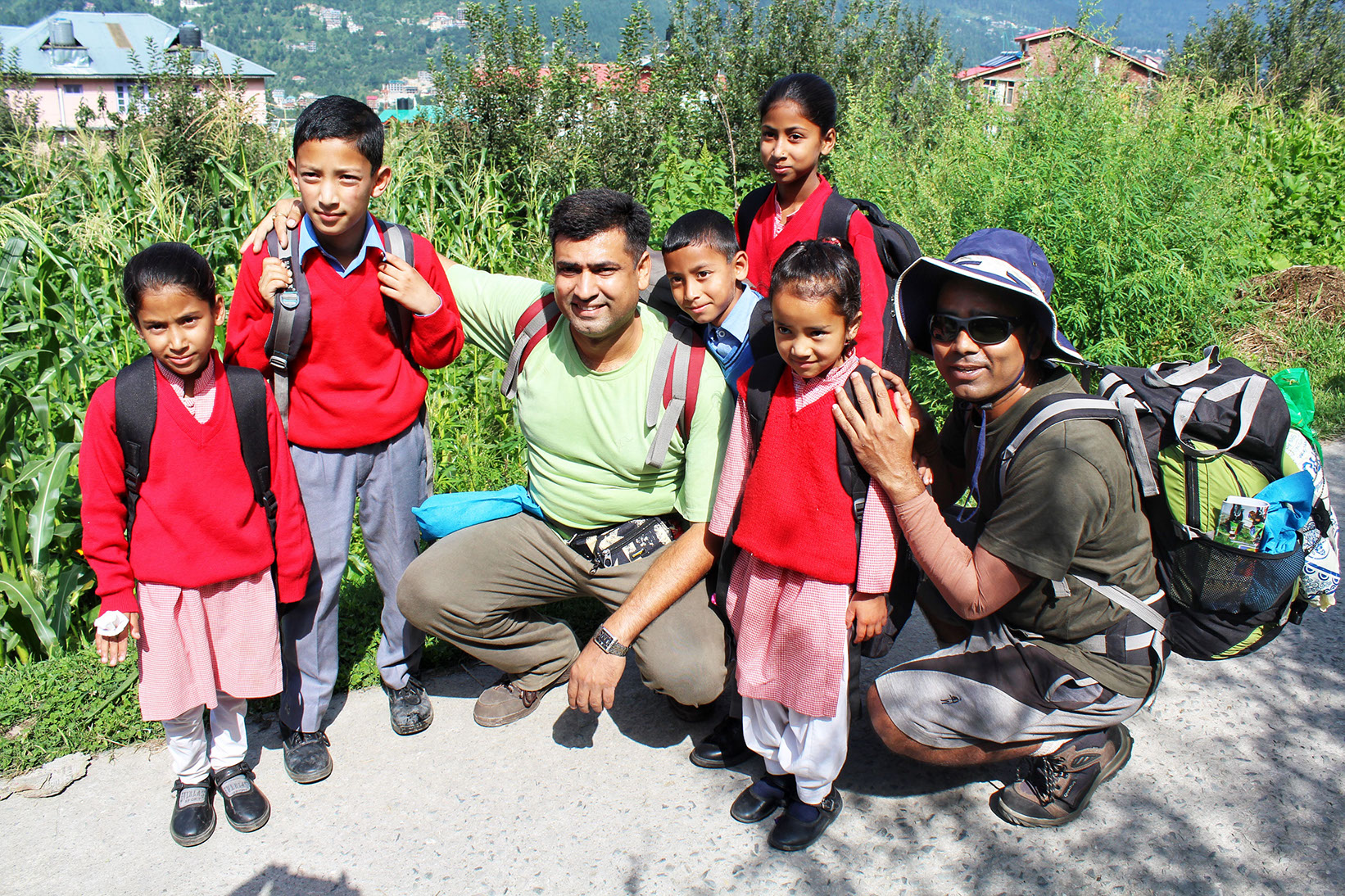
These little ones definitely bring a smile on anyone's face! A lovely welcome to Prini
Quick Itinerary
The first day was spent getting acclimatized owing to the increased altitude and reduced oxygen supply. We did a 4-hour trek to get a sense of what to expect in the coming days and get mentally and physically prepared. Although rare, there are cases where first-time trekkers withdraw from the trek owing to lack of physical and mental preparedness. Here, we get to know our fellow trekkers and soon friendships start blossoming. One of the best times to connect with fellow trekkers is during meal times. Speaking of meals, the food served on these treks are vegetarian. A local cook is stationed at every campsite and fresh simple food is served. While at lower altitudes some variety of veggies are on the menu, at higher altitudes it is limited to mostly potatoes. Day 1 ended with a briefing of the plan in the days ahead and we retired in anticipation of an exciting day ahead.
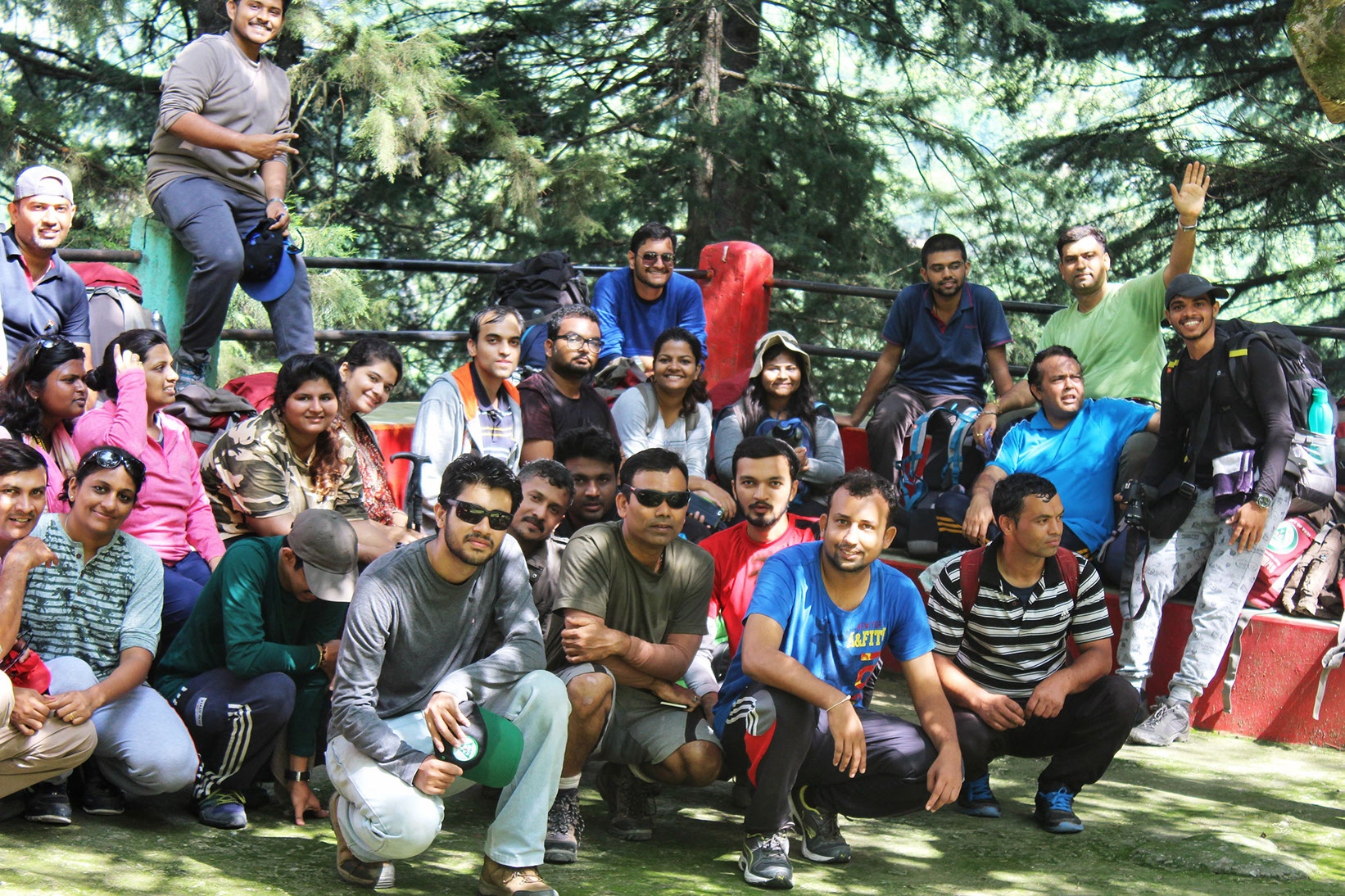
Great company makes for great adventures...these happy fellow trekkers made my Hampta Pass Trek fantastic!
Prini to Jobra
On day 2, after an early breakfast, we were advised to pack our bags for the trek. Each trekker may carry a maximum of 8 kilograms, so pack smartly for Hampta Pass trek. Owing to previous experience, I took only the bare essentials and left my extra baggage at the base camp locker facility as did most trekkers. From Prini, we boarded the bus which dropped us to the starting point of the Hampta Pass trek route, which is Jobra. The drive itself is exhilarating with almost 40 hairpin bends covered in about an hour. This drive is possibly one of the most beautiful mountain drives I have done. Most people miss enjoying this scenic drive in anticipation of the trek itself. So make sure you grab a window seat on the bus and soak in the stunning views that make for a perfect prelude to the spectacular trek ahead.
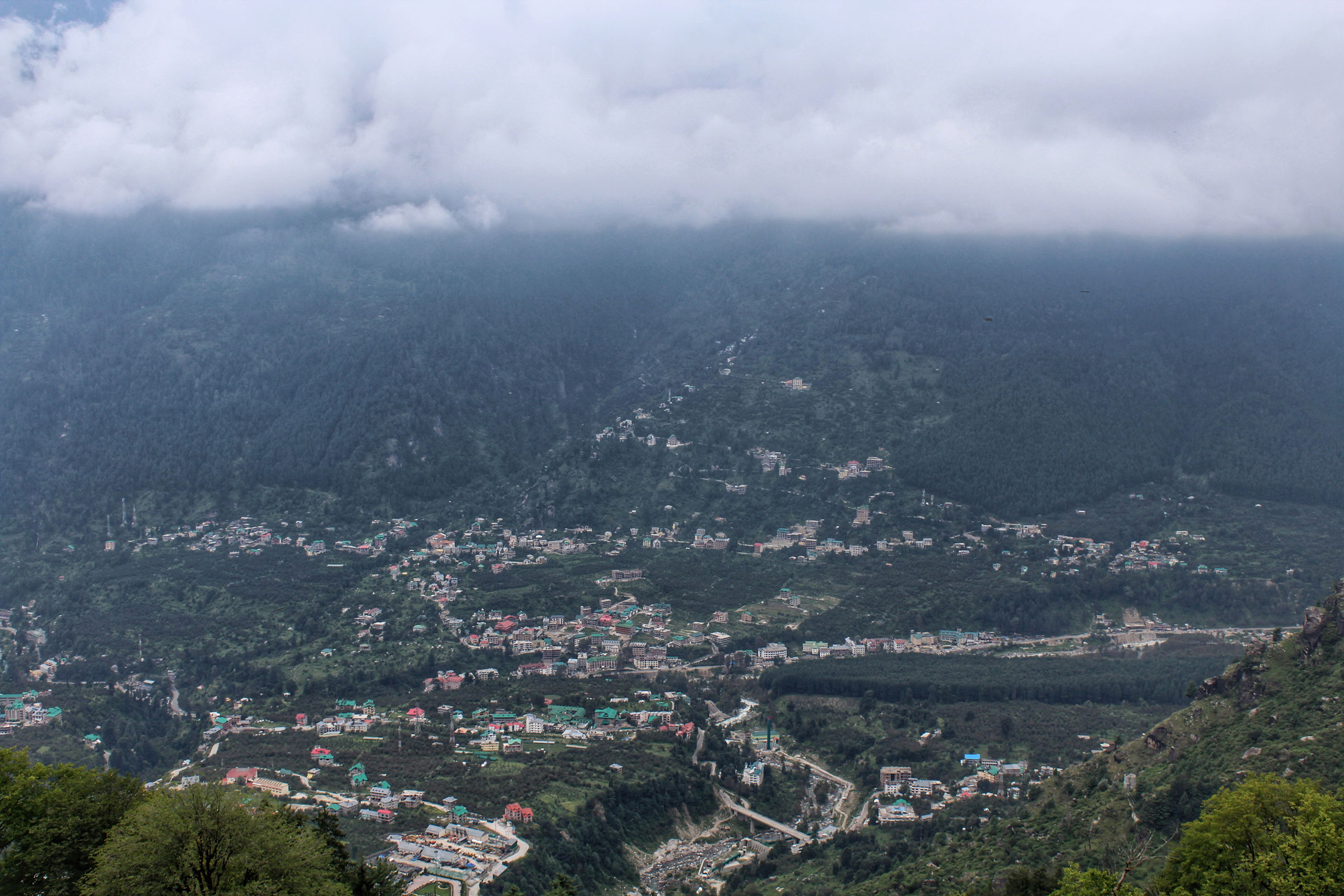
Panoramic view of Manali is spectacular on the drive enroute to Jobra, the starting point of Hampta Pass trek route
Jobra to Sethan Village
Jobra is where the actual trek begins. Hampta Pass trek requires you to cover a total distance of 29 km. At an altitude of 9,184 feet, a relaxed trek took us through the most beautiful forest area. The dense forest laden with pine trees, oak trees and maple trees, was mesmerizing! The freshness of the pine trees filled the cool air with a beautiful fragrance making for a soothing 5-hour trek. There are apple orchards along the way adding to the beauty of the place.
We reached Sethan Village which was an 8-kilometer walk. This is the last village along this trek. From this point, accommodation at all campsites will be in tents as there are no civilizations settled beyond this point. All land beyond this point is a protected area and permissions are required from the forest department to venture into these areas. After a comfortably paced trek, we called it a day. Content with a satisfying day, we had a freshly cooked simple meal and retired for the day at Sethan.
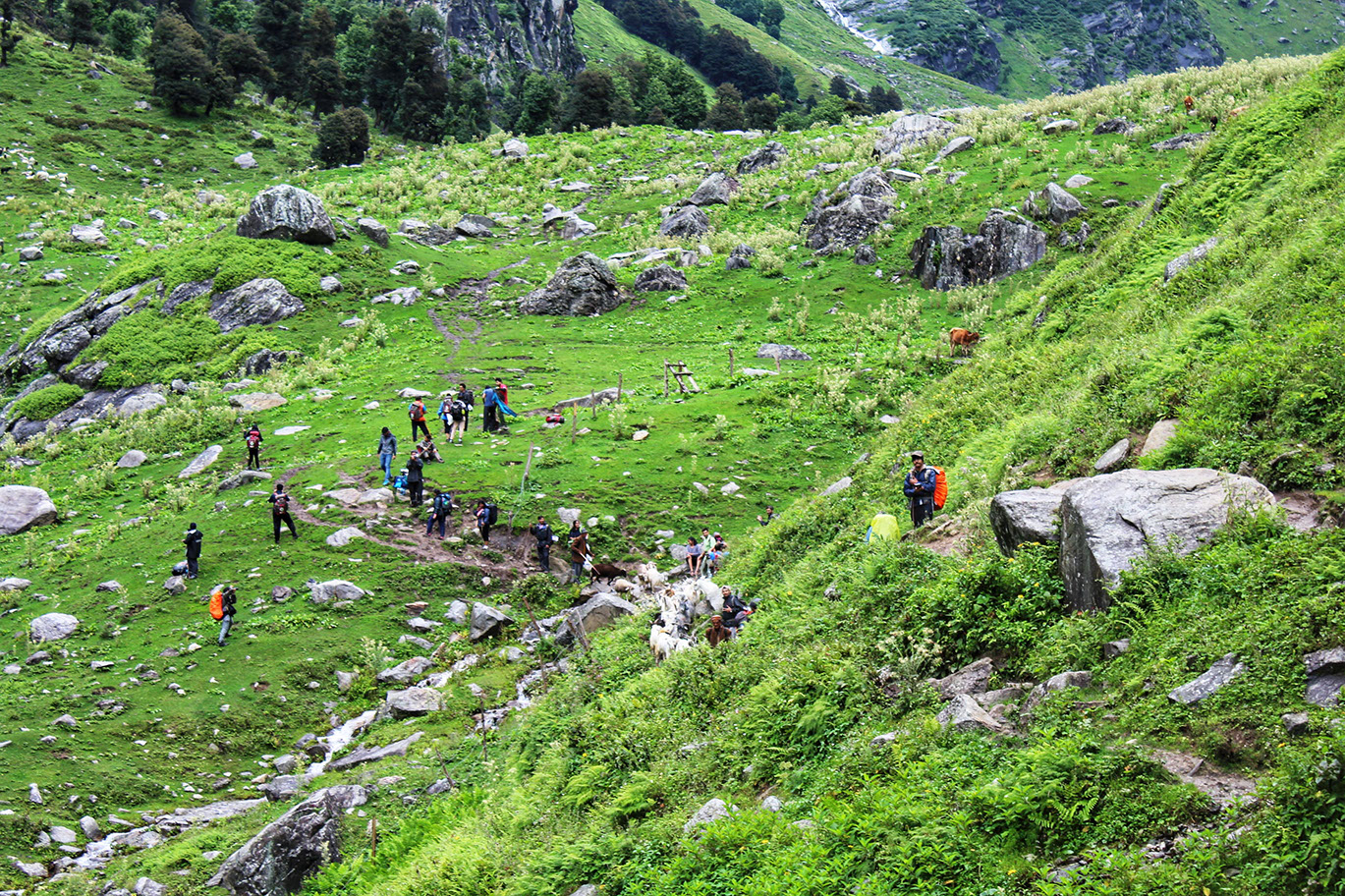
The feeling of being one with nature while trekking through this section of Hampta Pass trek route to Sethan Village is exhilarating
Sethan Village to Chika Camp
On day 3, our route was from Sethan Village to Chika camp. Once we reached this section of the trek there were certain logistic facts that were laid out to us. There is no electricity beyond this point, so we have to optimize daylight, which means we rise at sunrise and retire at sunset. There is also no mobile connectivity beyond this point. Our source of water were the numerous clear streams running along the path of the Hampta Pass trek. The water was so clean and fresh, making for a "delicious drink". Everything was minimalistic but sufficient.
The trek from Sethan Village to Chika camp was 8 km taking us to an altitude of 10,824 feet. Trekking through verdant meadows and climbing up a hill, we arrived at a huge campsite, Chika. Surrounded by lush greenery with the sparkling Rani River flowing in the middle, it was the perfect place to camp for the night. After a simple warm meal, we spent some time bonding over a torch-enabled "campfire" before retiring for the night.
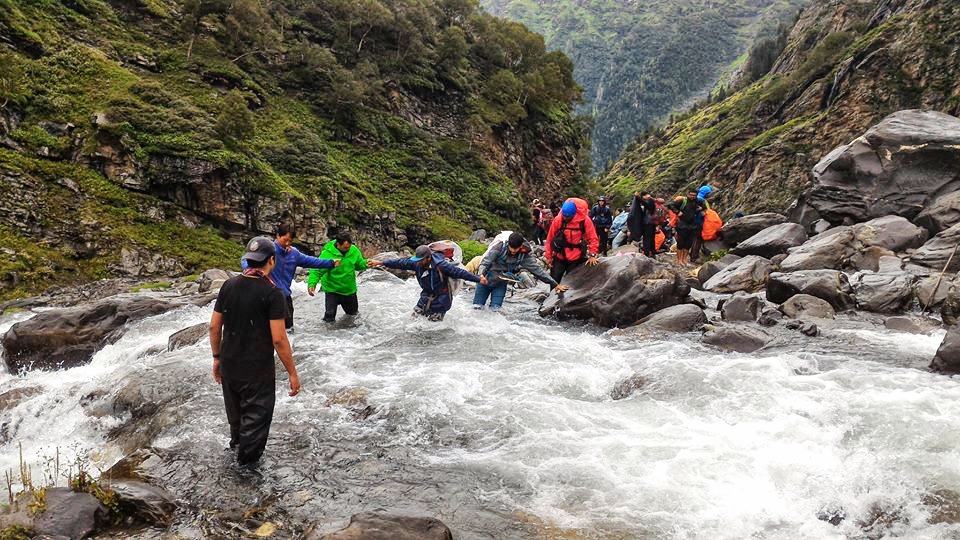
The gushing streams along the Hampta Pass trek route were fun and adventurous to cross over
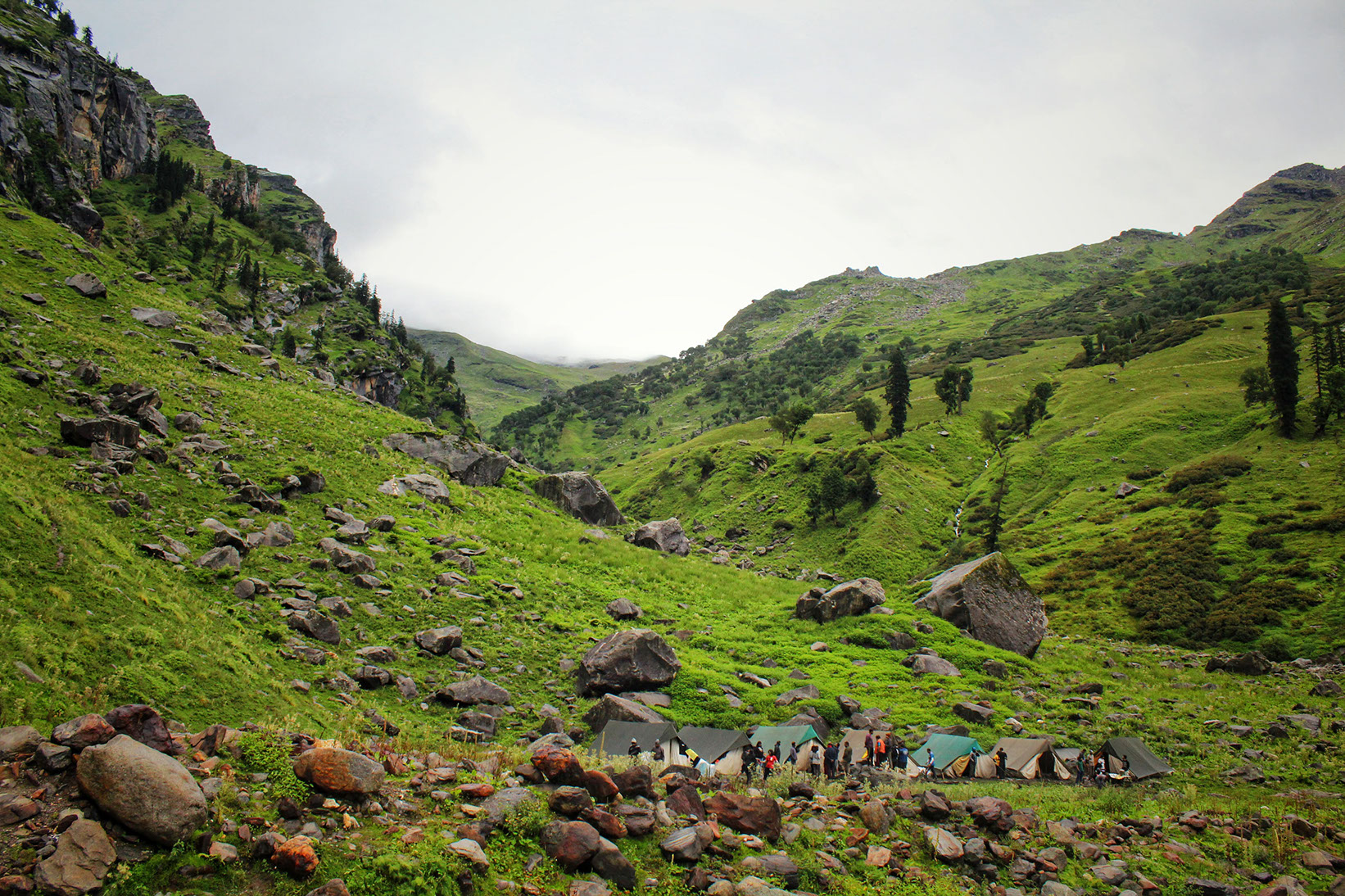
Across the rugged mountains and in the lush valley is where we camped for the night - Chika campsite
Chika Camp to Balu Ka Ghera
Day 4 was anticipated to be slightly more challenging and we were all geared up and raring to go, our destination for the day being Balu Ka Ghera camp. This was a 13-kilometer trek that starts along the bank of the Rani River. Sprinkled with Rhododendron and lined with silver birch trees, this section of the trek was a treat to the eyes. We had some company as well...herds of goats grazing around.
The area is home to a number of birds, such as Himalayan Snowcocks, Himalayan Monals, and Golden Eagles, among others. The trek also boasts a variety of wildflowers, including Himalayan Blue Poppy, Himalayan Bellflower, and Himalayan Primrose, which make for a picturesque setting.
Surrounded by natural beauty with a splendid view of the snow capped mountains, this was truly a piece of heaven on earth. Half way through, is the picturesque Jwara Valley, a perfect spot for a break. From here, the trail gradually gets challenging. The terrain changes from lush greenery and streams to rocks and snow. At an elevation of 11,808 feet, Balu Ka Ghera is the perfect campsite to end the day.
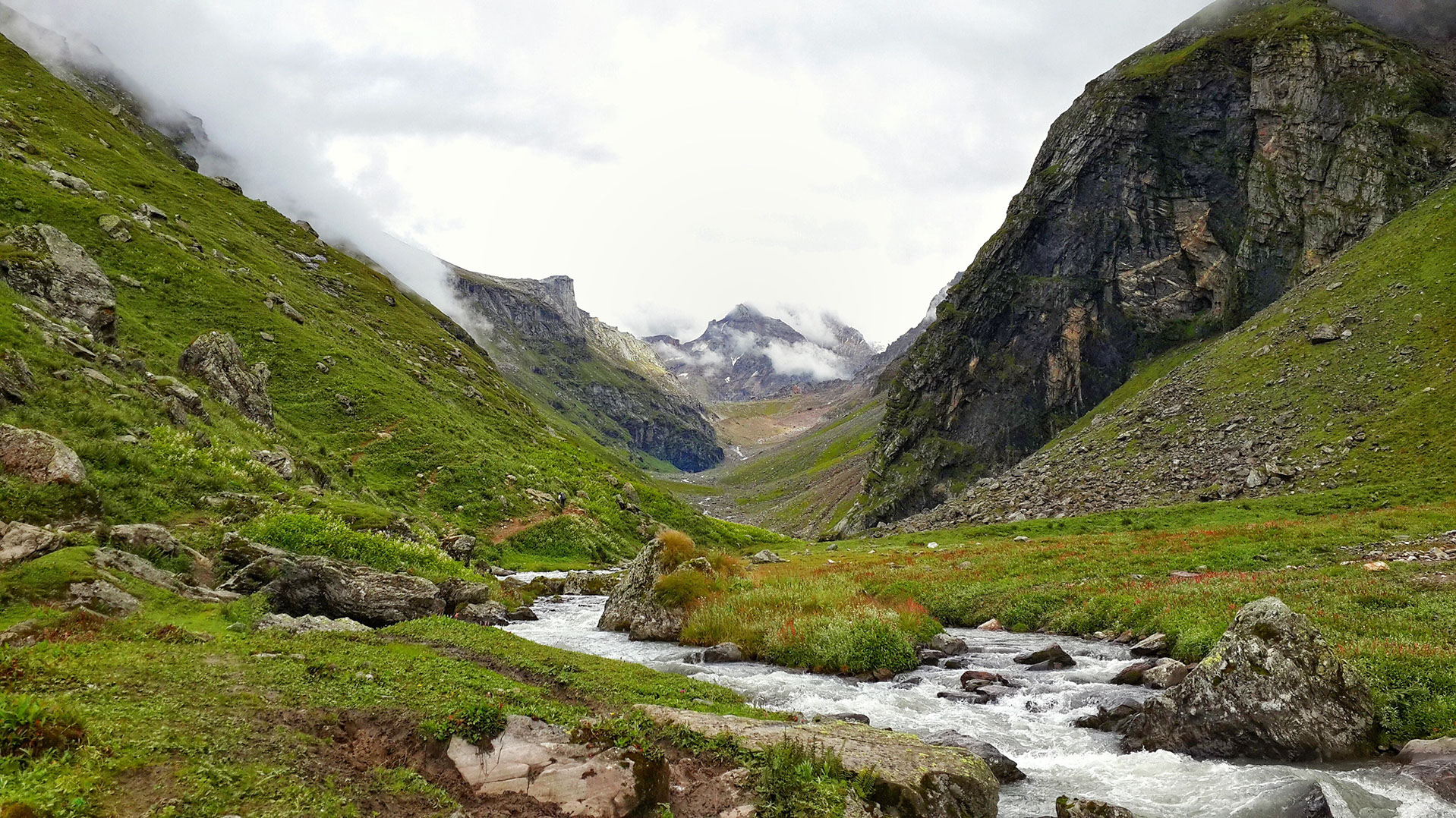
The sparkling Rani River flowing through lush mountains decorated with Rhododendron is truly mesmerizing
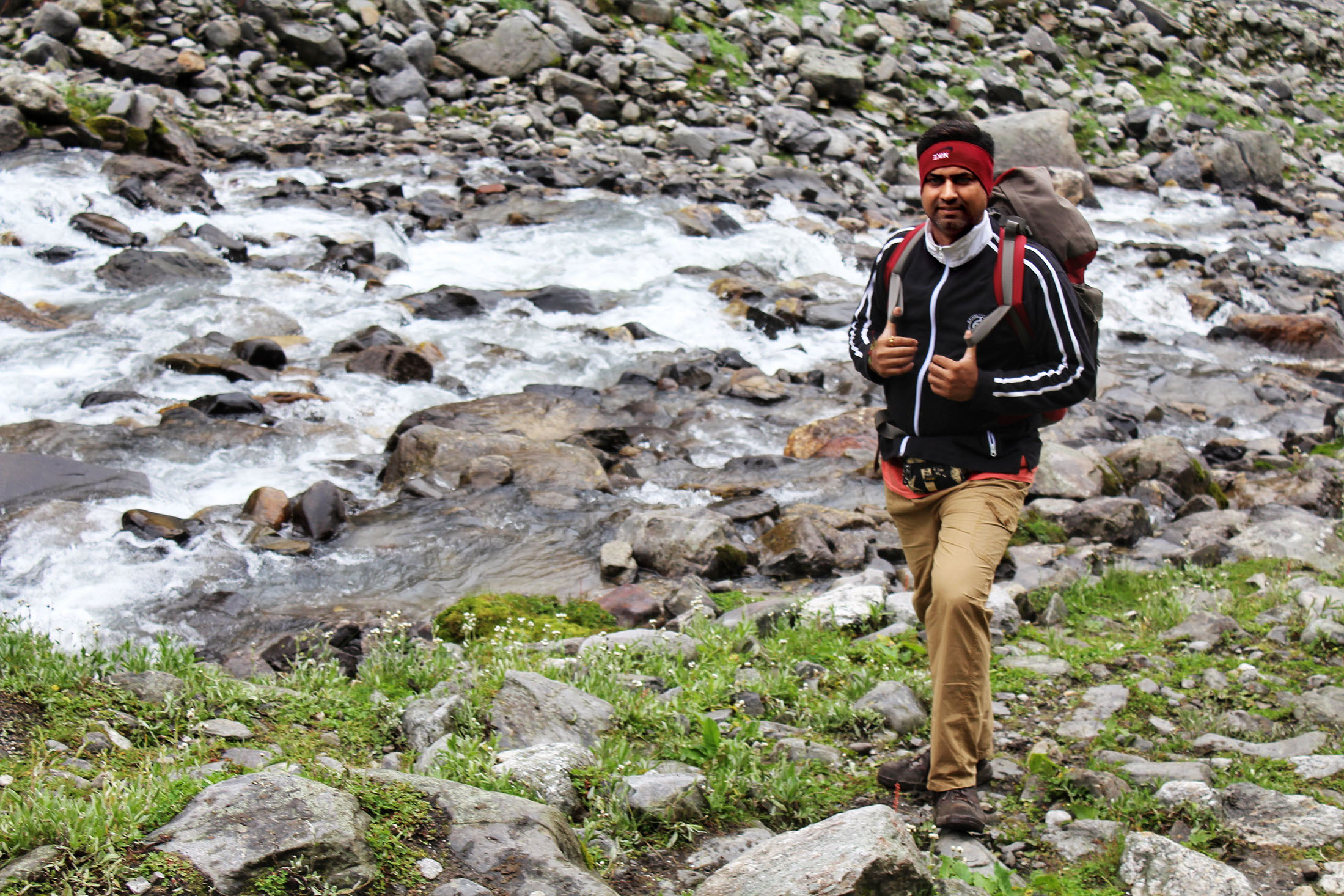
That's me in my element in the splendid lap of mother nature
Balu Ka Ghera to Hampta Pass and Siagoru
There are many challenges and difficulties in the Hampta Pass trek. According to our guide, day 5 would be the most challenging part of this trek. With 9 hours of trekking involving a climb along Hampta Pass and a steep descent to Siagoru, it was going to be the longest day of the trek. An hour's gradual ascent took us to the first plateau. From this snow-covered spot, the view of Deo Tibba Peak was spectacular. From here, we headed further past another plateau and across a couple of ridges. Finally, the mount to Hampta Pass was in sight.
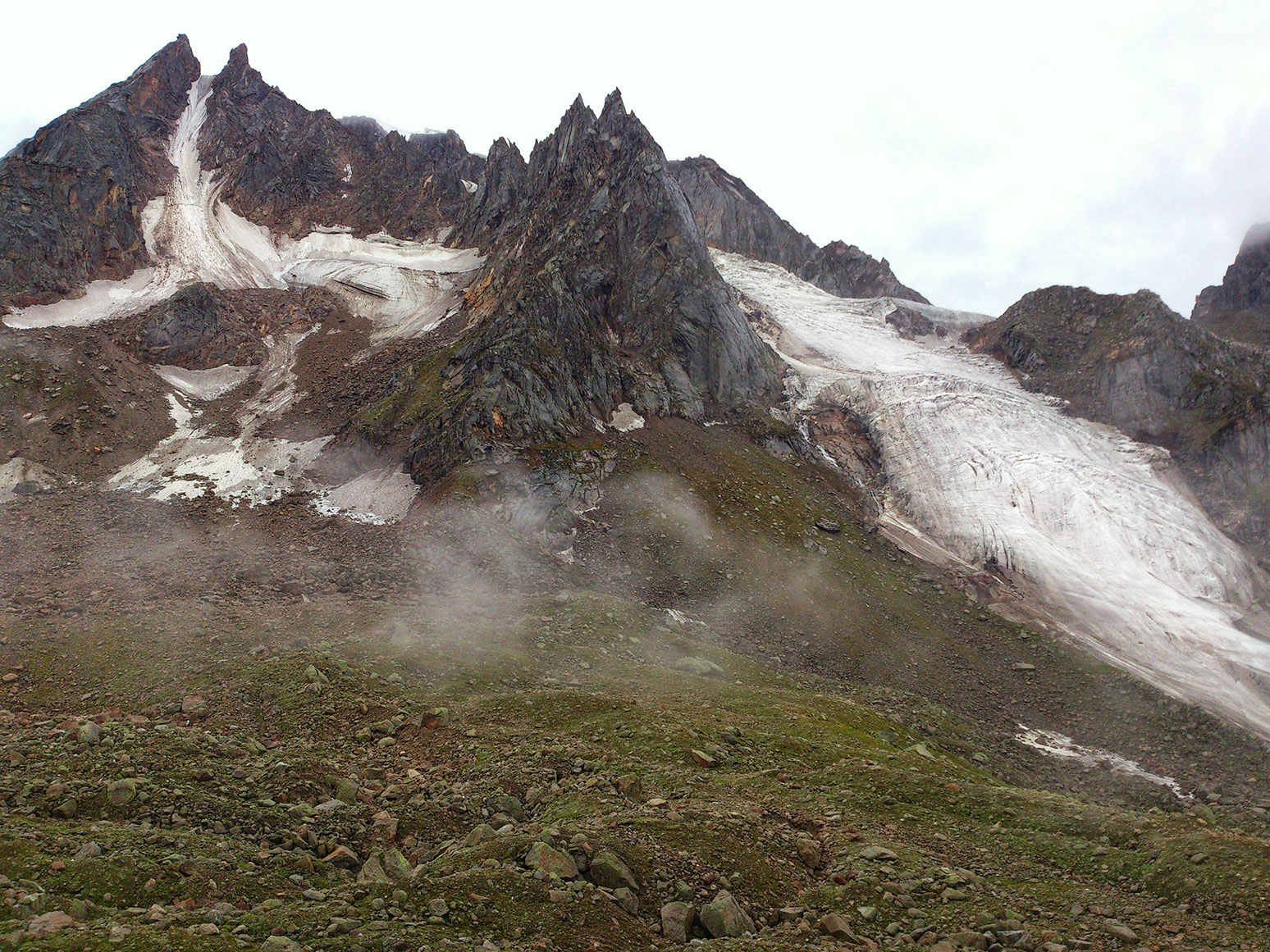
At a height of 19,600 feet, Deo Tibba Peak is the 2nd highest peak of the Pir Panjal range and is believed to be "the abode of the Gods"
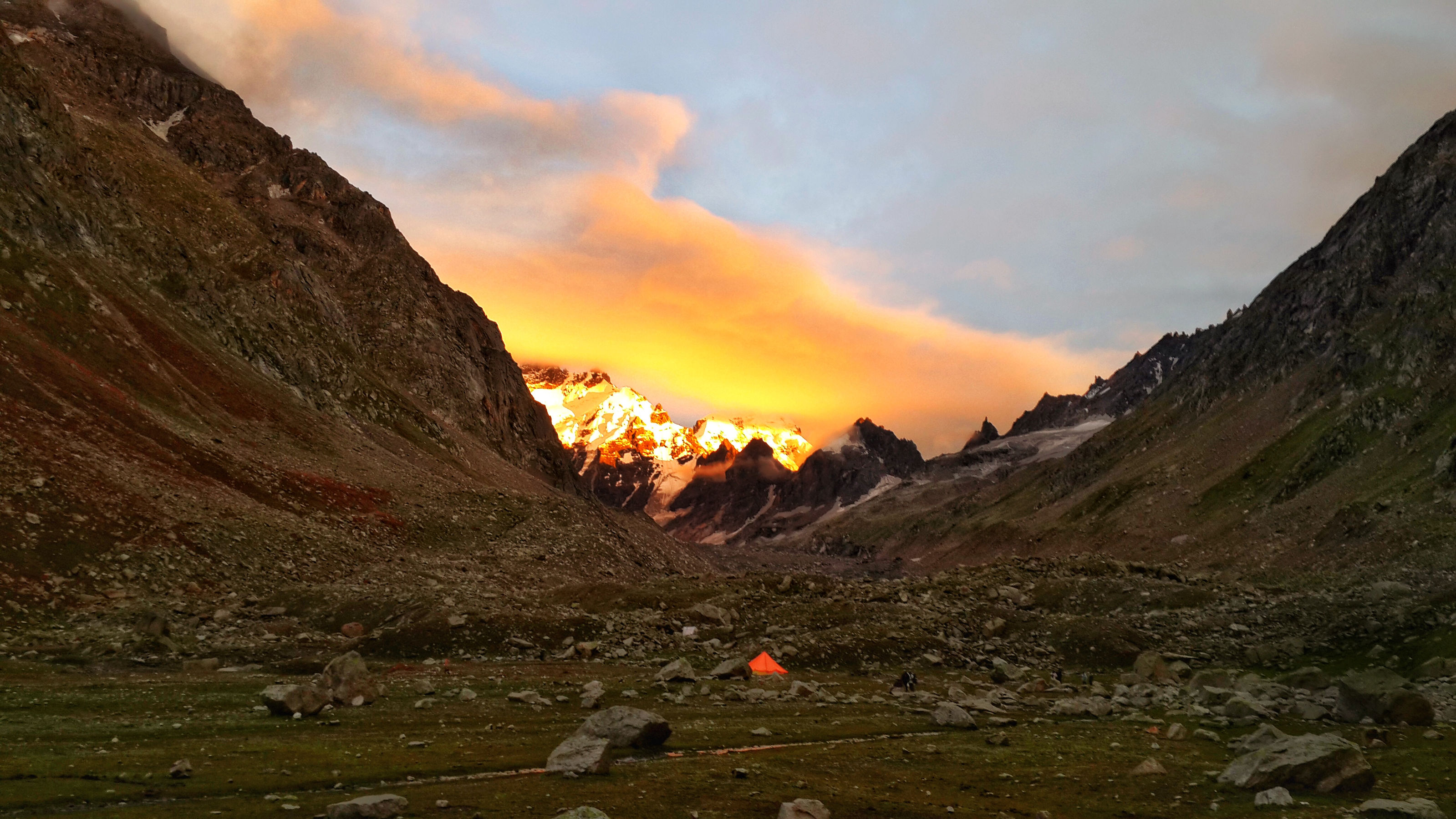
The view of Hampta Pass with the sun's rays on snow-capped mountains creating a shimmering molten gold appearance is surreal
This climb was extremely tiring but we marched on excited about what was waiting for us at the top. The view from the top was worth all the effort, gobsmackingly stunning! This is the highest point of the trek at 14,100 feet. It is believed that a sadhu (holy man) named Hampta meditated here giving it the name. After soaking in the incredible beauty of nature, we began the descent which was rather steep. The best way to reach the bottom is to slide down. Once we reached the base, the trek from here to Siagoru was pretty much on flat land. It is the coldest place on this hiking expedition. The campsite was along the river bank making for a perfect spot to pitch for the night. What an amazing day it was, truly memorable!
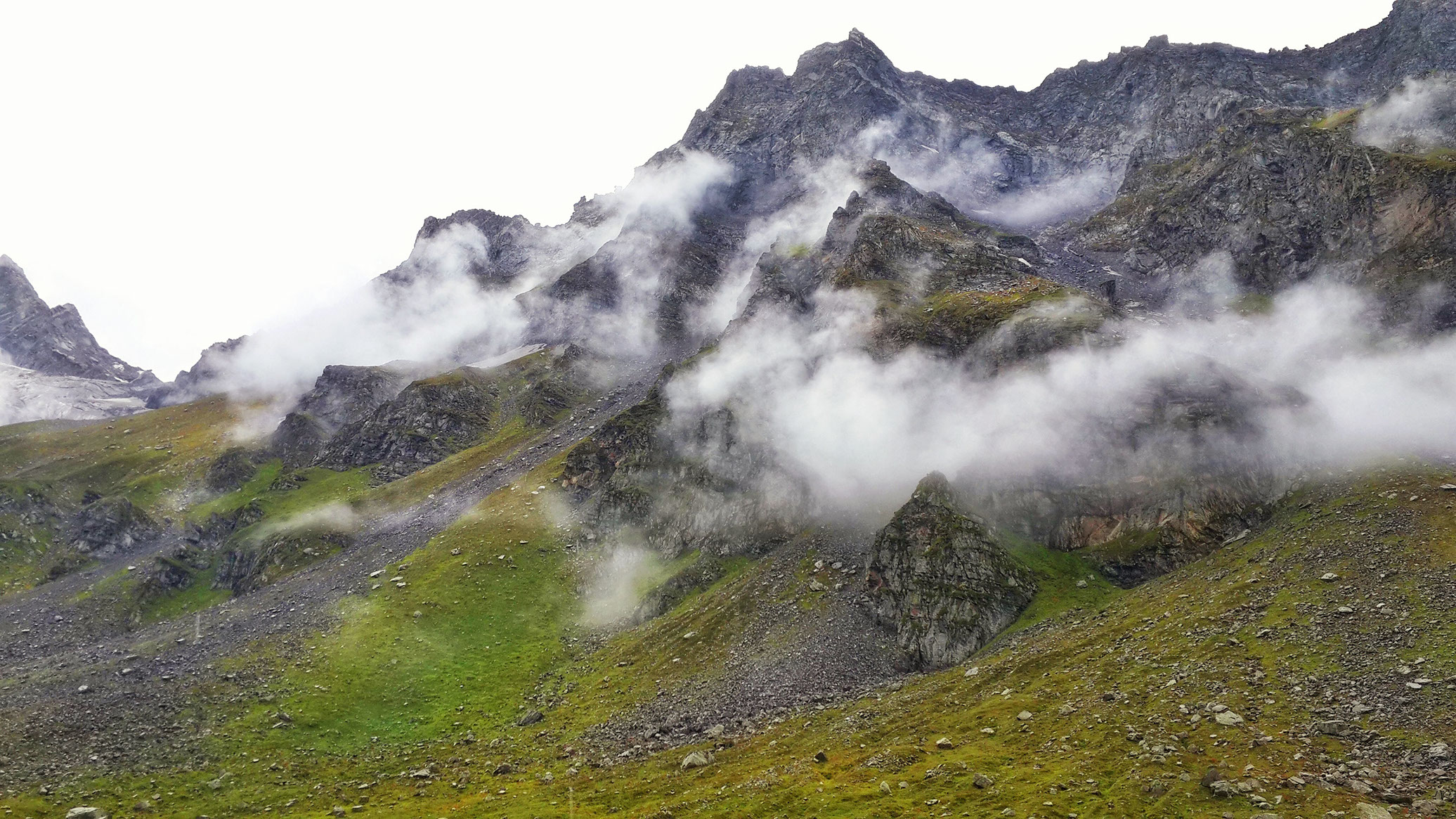
The view from Hampta Pass leaves trekkers spellbound and I was not different
Siagoru to Chatru and Chandratal
After an exhilarating trek the previous day, we were a happy bunch with a sense of achievement and contentment. Day 6 was to take us to our next campsite destination, Chatru. Starting at 12,900 feet in Siagoru, we descended to Chatru at 11,000 feet. This downhill trail was easy and relaxed, taking us about 5 hours. The path was along the river valley and mountain ranges and the terrain was barren. The trail does have some challenging sections, so exercise caution at all times. Crossing ridges and a couple of glaciers, we finally reached our campsite at Chatru, again alongside a river, this time Chandra River. It is a scenic spot to camp and retire in the lap of nature.
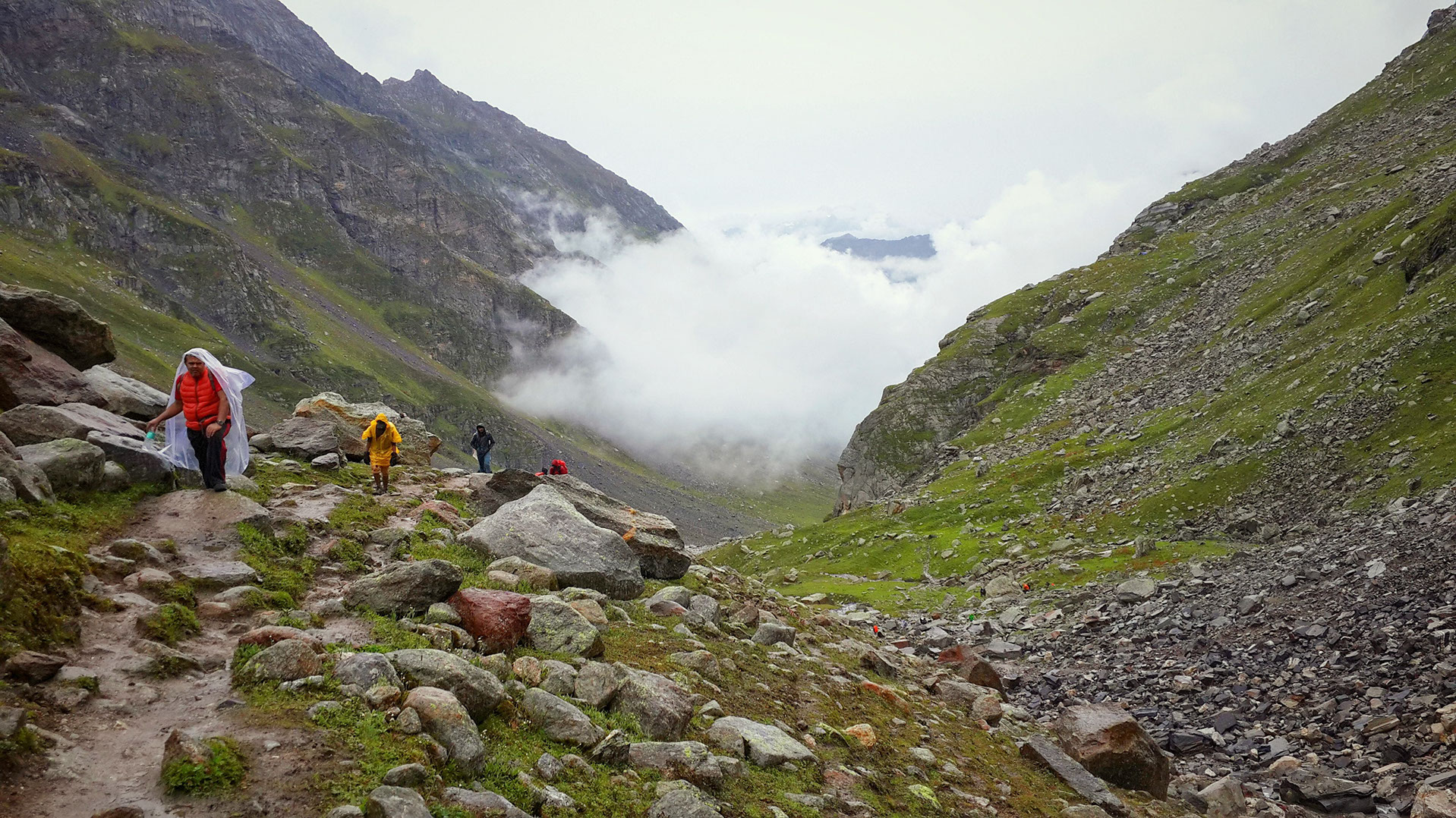
Descending from Siagoru to Chhatru was enjoyable as we crossed several ridges and glaciers
Chandratal Lake to Prini and Manali
The next morning, over breakfast, we were reminiscing about the past few days and our fantastic experiences. It was day 7 and we were heading towards the last leg of our trek. The day's highlight was trekking to Chandratal Lake also known as Moon Lake. The pristine lake surrounded by stark mountains is a sight to behold. After enjoying this enchanting place and breathing in the crisp fresh mountain air one last time, we descended towards the base camp. Gazing at the staggering Himalayas crowned with cottony white clouds was a truly humbling experience. The magnanimity of nature engulfed me leaving me in awe. From here we boarded the bus to Prini passing through Rohtang Pass. At a height of 13,000 feet, it is believed to be one of the most beautiful mountain passes in India.
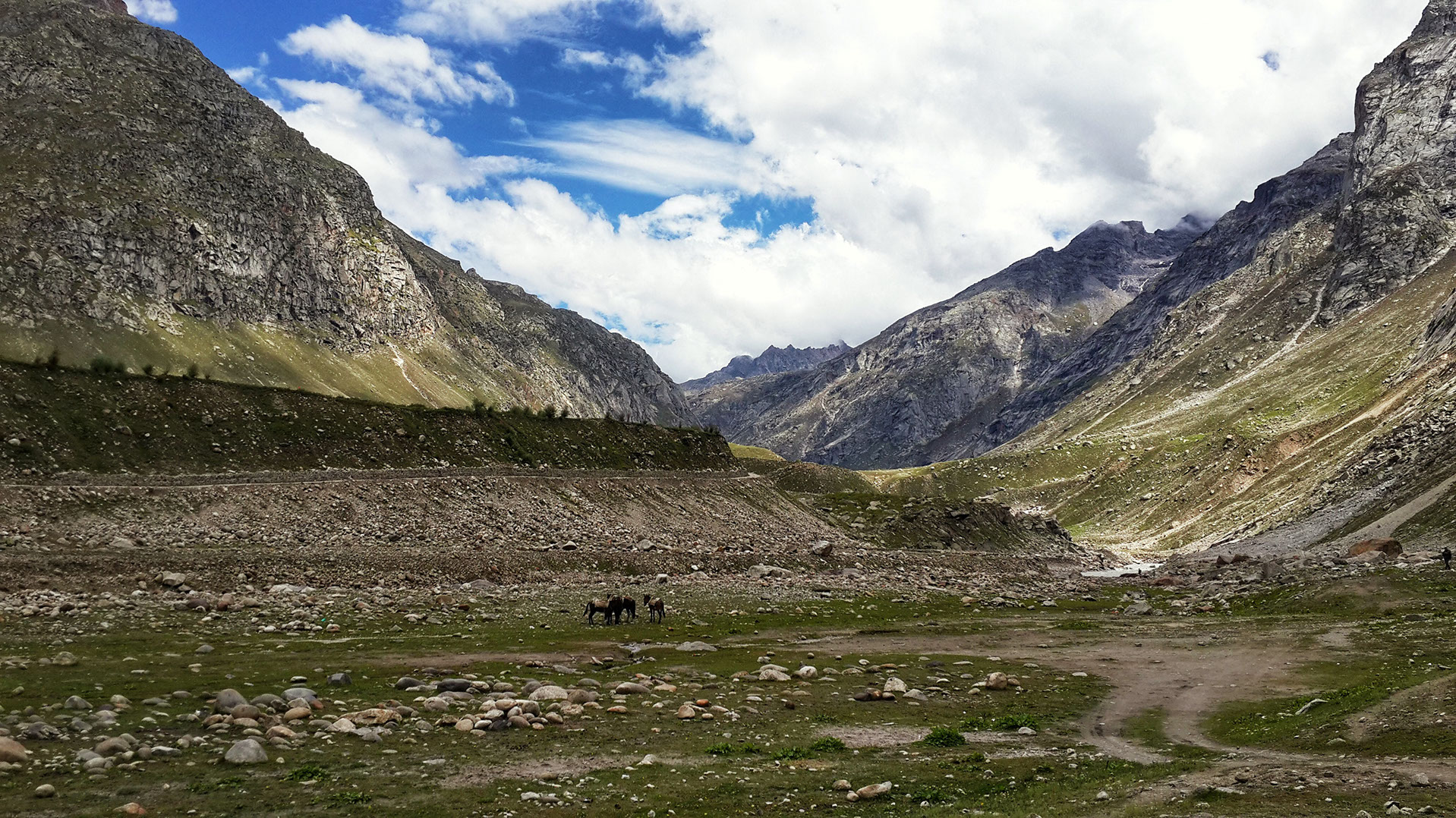
A last glance in the Hampta Pass direction and the sight of the majestic mountains and lush green valleys stirs up emotions
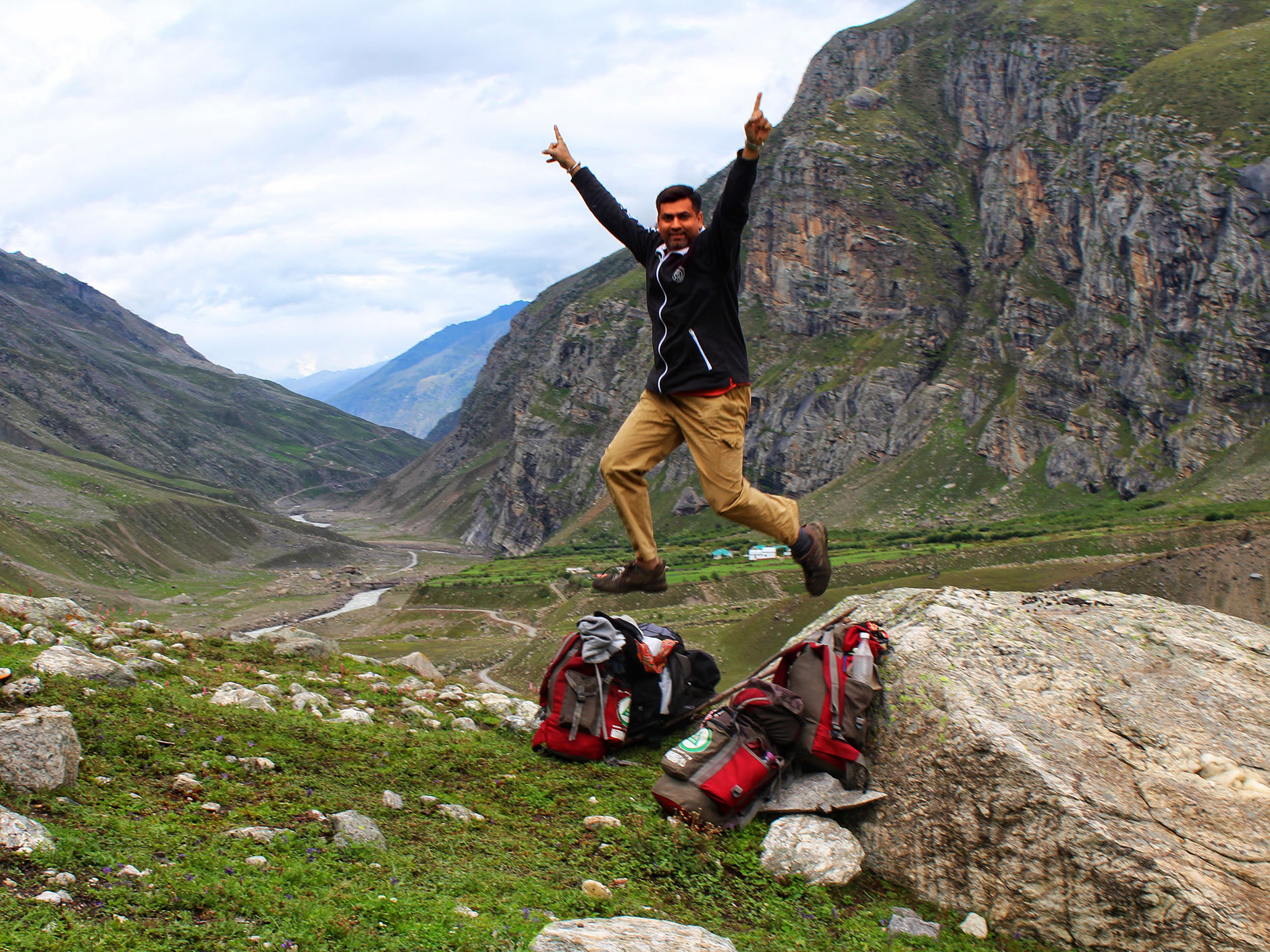
A leap of ecstatic joy on successfully completing the Hampta Pass trek route
An Unforgettable Experience
At Prini on the last morning of our once-in-a-lifetime trekking expedition, we spent time with our fellow trekkers discussing our adventures and exploring possibilities of another trek to the Valley of Flowers, sooner than later. The energy and vibe of like-minded people is something else and the air was filled with enthusiasm about the next trekking expedition. The budget for Hampta Pass trek was so affordable that thinking about another expedition is not hard. Breakfast done and friendships secured, it was time for us to head back home. As I checked out and headed to explore Manali, I could not help but look back at the incredible surroundings and feel a pang of sadness. But then, as they say, once a trekker, always a trekker...I knew that the mountains would beckon me soon enough and I would be back to my sanctuary, the Himalayas.At Prini on the last morning of our once-in-a-lifetime trekking expedition, we spent time with our fellow trekkers discussing our adventures and exploring possibilities of another trek to the Valley of Flowers, sooner than later. The energy and vibe of like-minded people is something else and the air was filled with enthusiasm about the next trekking expedition. The budget for Hampta Pass trek was so affordable that thinking about another expedition is not hard. Breakfast done and friendships secured, it was time for us to head back home. As I checked out and headed to explore Manali, I could not help but look back at the incredible surroundings and feel a pang of sadness. But then, as they say, once a trekker, always a trekker...I knew that the mountains would beckon me soon enough and I would be back to my sanctuary, the Himalayas.
Frequently Asked Questions:
Is Hampta pass trek for beginners?
The Hampta Pass trek is a high-altitude trek that is gaining in popularity among adventure travelers. This route offers breathtaking views of the Pir Panjal range. It is perfect for a novice hiker wanting to explore the Himalayas. There are not too many trekkers on this route, and it is relatively easy-moderate when compared to other treks in the area. While this trek may sound easy, it involves crossing a few high passes and climbing some steep slopes.
How high does the Hampta Pass trek reach in altitude?
The highest point of the Hampta trek is 14,100 feet, and there are some steep sections along the way. The path crosses a series of elevation changes, from low valleys to steep mountain passes. Some sections range from moderately difficult to tough at times.
Do I need to bring my own camping gear for the Hampta Pass trek?
The type of trek you choose will determine what you need to bring. You will usually receive camping equipment such as tents, sleeping bags, and mattresses if you are trekking with a company or guide.The type of trek you choose will determine what you need to bring. You will usually receive camping equipment such as tents, sleeping bags, and mattresses if you are trekking with a company or guide.
Is it safe to trek in the Himalayas?
As with any high-altitude trek, there are some special considerations to take into account when preparing for a trek in the Himalayas. Firstly, it is important to gradually acclimatize to the altitude by spending a couple of days at the base camp or another nearby town. Secondly, it is essential to pack appropriate clothing and gear, including warm layers, sturdy shoes, and a waterproof jacket.
What is the duration of the Hampta Pass trek?
Hampta Pass trek takes about a week and requires stamina to keep moving even in grueling weather. At times, trekkers may find themselves having to ford rivers or tackle snow-covered slopes. However, the views from the top are well worth the effort, and the sense of accomplishment that comes with completing the trek is unbeatable.
How much does the Hampta Pass trek cost?
Hampta Pass trek costs vary depending on a variety of factors such as the trekking company, the duration of the trek, and the package included. Typically, a 7-8 day trek costs between INR 12,000 and 20,000 per person. However, transportation costs from the starting point to the base camp are not included. Please note that these prices are only estimates and may vary depending on the specific details of the trek package.
Can Hampta pass be done alone?
It is technically possible to trek Hampta Pass alone, but it is not recommended. With difficult terrain and unpredictable weather, the trail can be tough. Always trek with a group or with a local guide who knows the area. This will ensure your safety and make the experience more rewarding. Also, having a guide or group can help you with logistics, like food, transportation, and accommodations.
What makes the Hampta Pass trek so famous?
A primary reason for the popularity of Hampta Pass is its stunning landscapes, which makes it an excellent trekking destination. From meandering rivers and dense forests to dramatic waterfalls and magnificent snow-capped peaks, few treks can match the diversity and grandeur of this one. Added to this are some fairly challenging sections of trail, which add an element of excitement for more advanced hikers.
Another major reason for the increasing popularity of this trek is its convenient location. The trails in the area aren't as far from civilization as those on Kilimanjaro or Everest Base Camp. This means you won't have to travel far to encounter great hiking. Not only does this mean that trekkers can enjoy world-class hiking without having to leave India behind, but it also means less logistical hassle.
Disclaimer: This blog may contain affiliate links. At no extra cost to you, we may get a small commission if you buy anything. All products and services we endorse have been personally used or come highly recommended to us. These incomes allow us to keep the community supported and ad-free.
Things To Consider
About the author
Rate the Story
Related Stories
Please share your comment
hi Turuhi, ill be trekking in hampta pass and Manali next week. what are the things to pack there?

love to visit such nice place in coming days, seems very spiritual place as located in sppity velly , may I know is there any private operator organising this trek and can this Trek can completed in six days ?
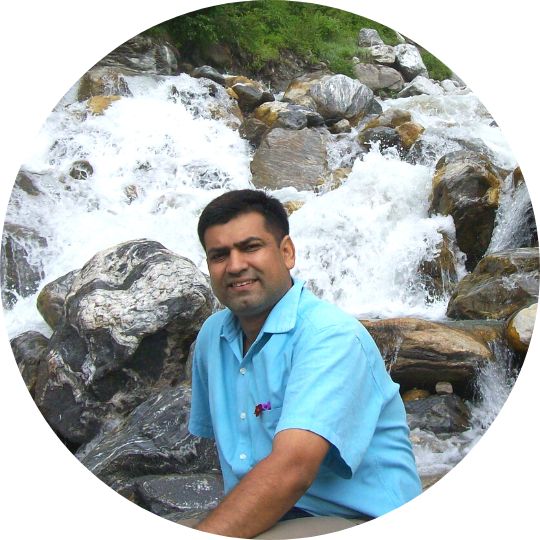
Thank you sanjiv, better not to squeeze no of days and club two days trek in single day, max one day can be reduced that is the day one( acclimatization day) if you are sure about your fitness. Yes you may find many private operators too,
Awesome article! I am planning to visit hampta pass Is trekking allowed in January?? and estimate the cost of trekking??

Thank you, better not to do in January as there would be deep snow and none of authentic organiser is organising in January, cost is depend upon organiser but appx would be Rs. 10000 ex base camp if planning through YHAI

Himalaya always fascinated and surprising us with eco diversity! Trekk details given in this story will really helpful a lot. Its recap for me and refresh trekk memories... Must do trekk for beginners which give view of lahol and spiti valley... With this trekk chandratal lake is must visit , near by attraction. Do plan hampta pass incl of chandratal lake stay..
Written in much details with all small necessary needs like mental preparedness, carry bag weight, food which is being served... day wise illustration make a series of nice story with photography give feeling to reader like virtual visit of this place.... Very Nice Sir...

Thank you priyank,your words will encourage others to have this trek once at least
Written in much details with all small necessary needs like mental preparedness, carry bag weight, food which is being served... day wise illustration make a series of nice story with photography give feeling to reader like virtual visit of this place.... Very Nice Sir...
I am reading you and I feel jealous, because of how well you have narrated it, it seems that I am the one who is enjoying the trek, you have described everything very well. It is important to do these experiences a year, charge yourself with positive energy. good luck.

Than you Manjit for nice word, one trek in year will take close to your real natur, let's plan one trek togather
Truly inspiring article about journey to beautiful places... You must have enjoyed... Hills are always been major attractions for me, but unfortunately could not make it for trekking... Articles like thing are putting pressure to go for it.. keep trekking and writing...

Himalayas have always mesmerized me whenever I have visited India. This is a magical place and you have done the justice with your stunning pictures. Thanks for sharing.

Thank you Richard, the picture is few sample there are lot othen then this few picture, Himalaya has its own nature
Excellent way of narrating the travel experience and the photographs were just out of the world,just like the exotic location.....my next travel destination for sure...

Rahul, we will go together, second time for me and first time for you, I will be your guide


Thank you Dipak for sharing your wonderful experience while trekking through Hampta Pass. I love those pictures with sun rays falling on snow covered mountains. It must be a treat to watch them in real.

Rahul, Thank you for your word, there are much more in this trekk, may be seen as actual while considering Hamta pass as your next destination for trekking

Wow! This is such a beautiful trekking experience and the photographs are out of this world! Truly inspiring. Thank you for sharing, Dipak.

Thank you Ranjini for an appreciation, May this will help to increase awareness towards nature and necessity of clean environment

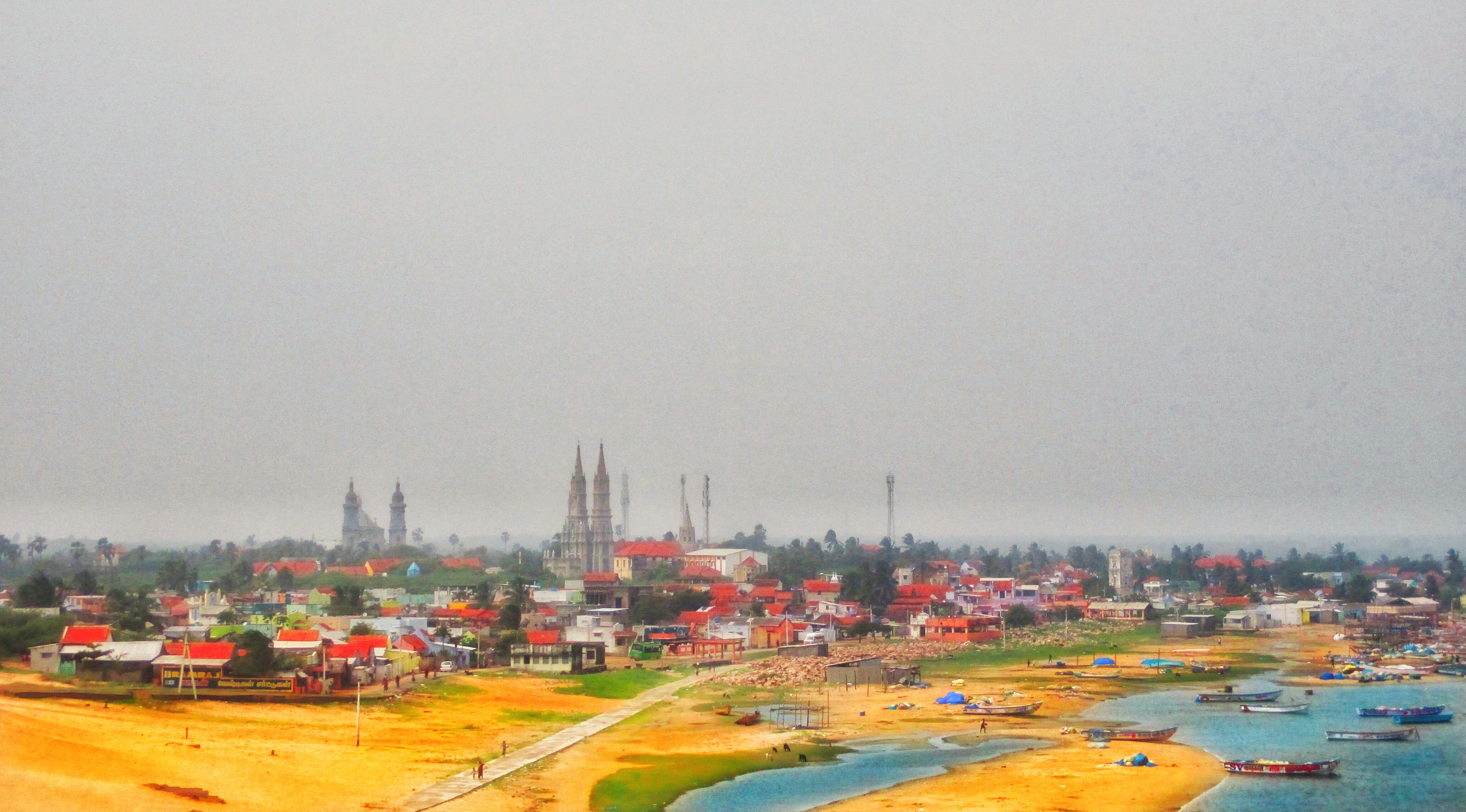
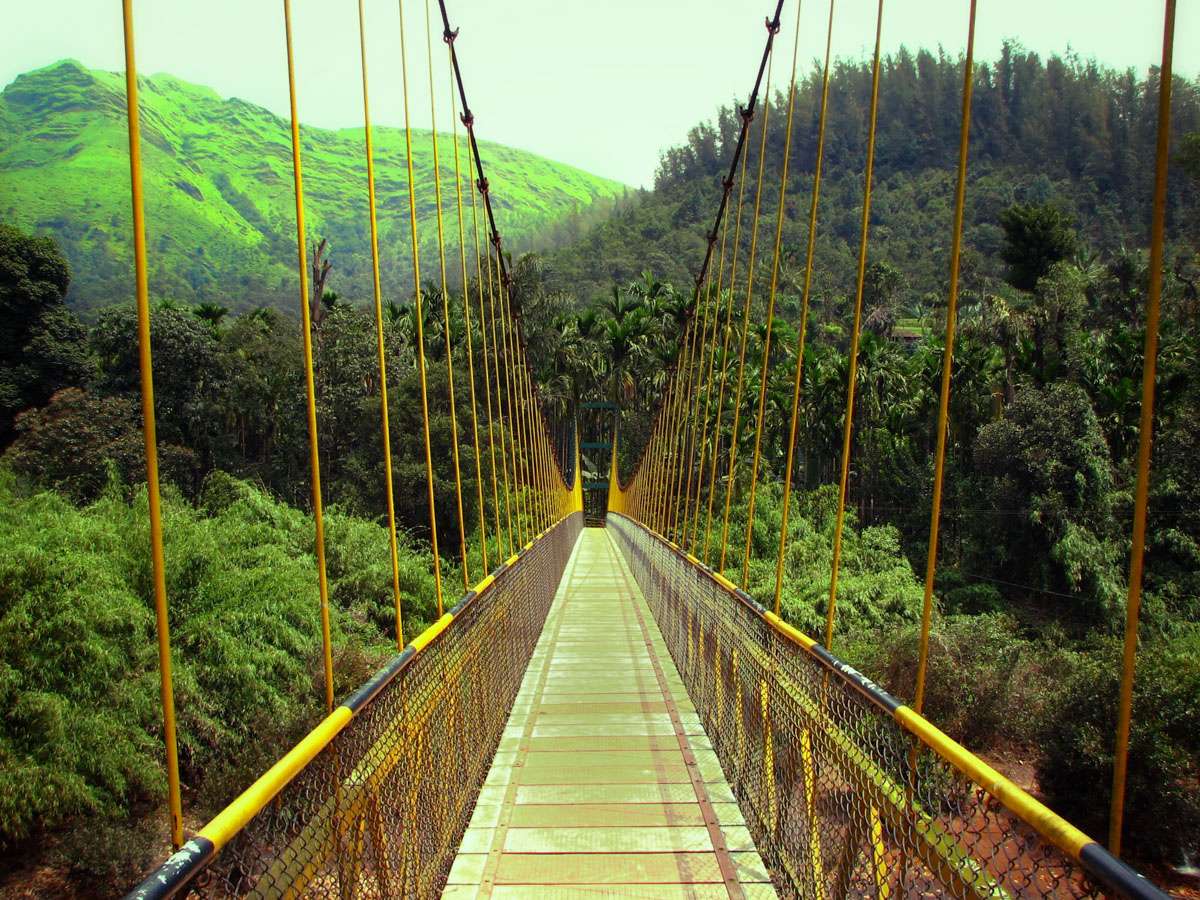
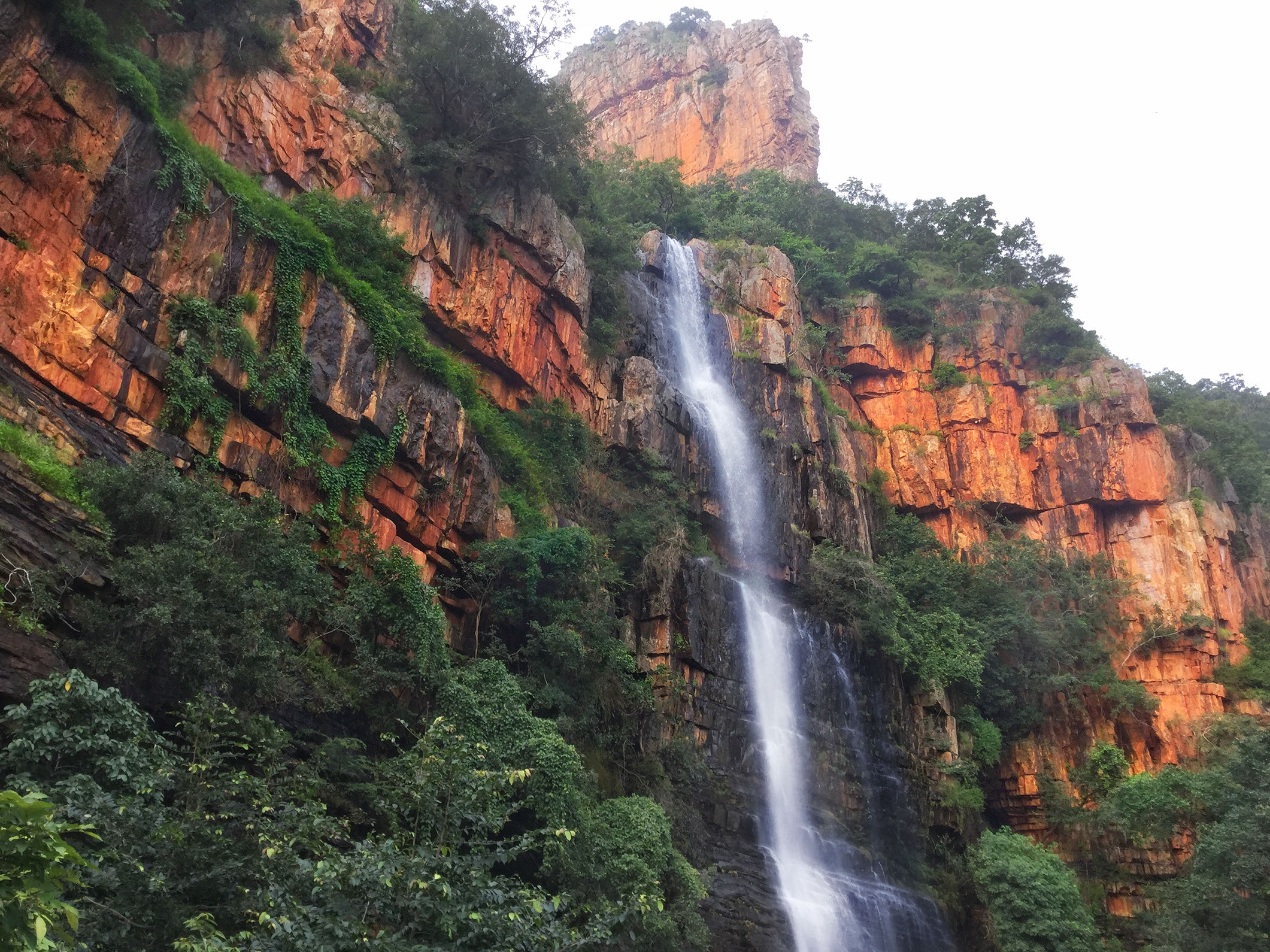

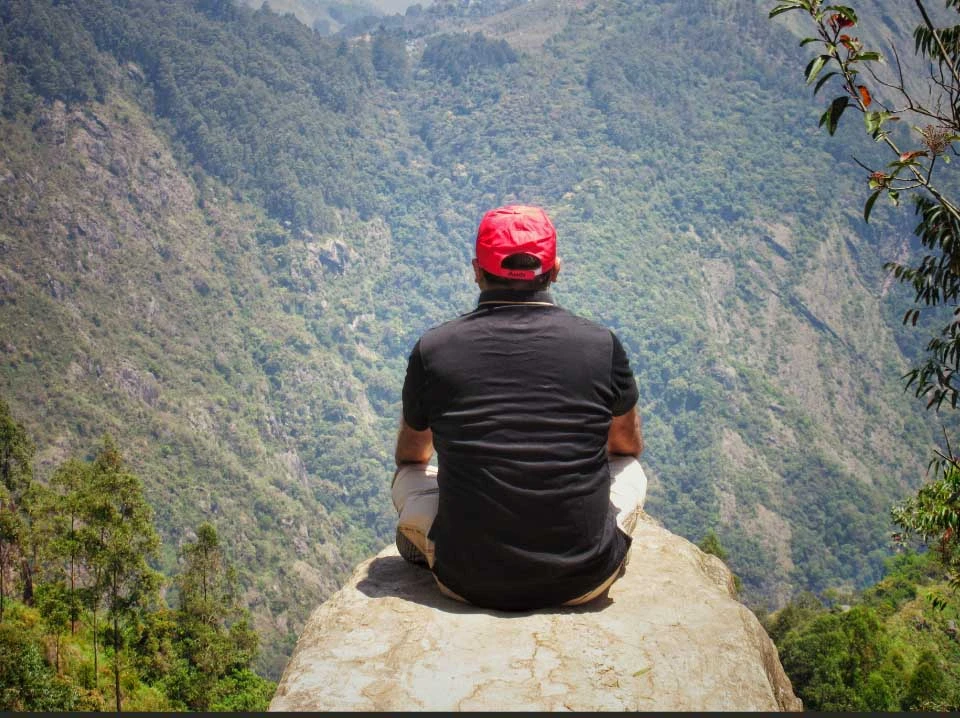
Name
Email
Comment